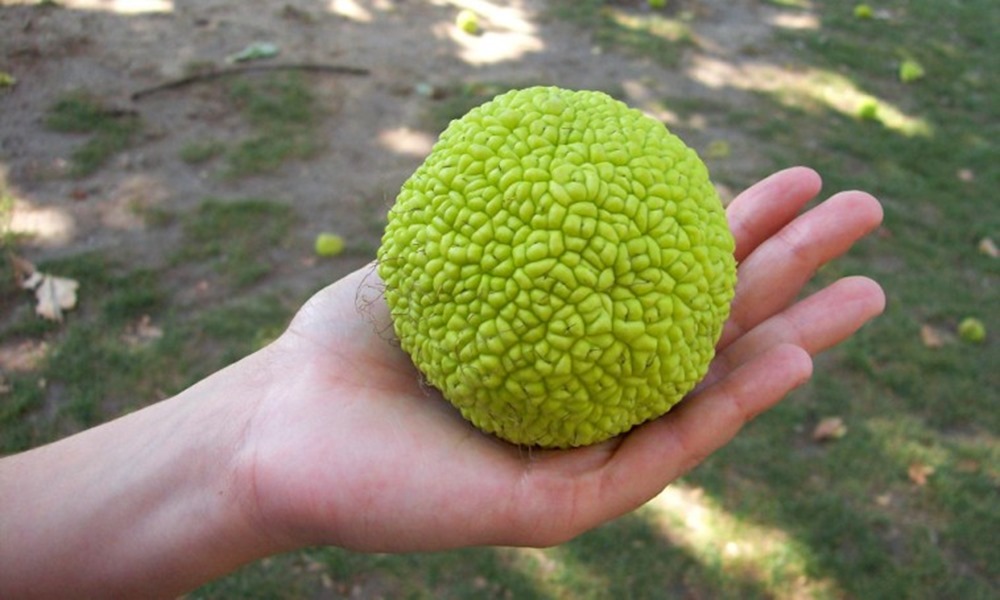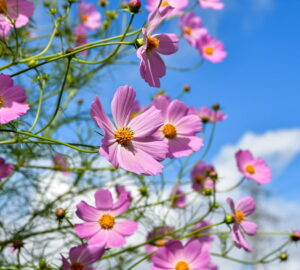Every autumn, curious gardeners and nature enthusiasts stumble upon a peculiar sight in parks and at the fringes of fields – strange, wrinkled “tennis balls” scattered beneath certain trees. These enigmatic fruits belong to the Osage orange tree (Maclura pomifera), a fascinating yet often misunderstood tree that goes by various monikers, such as mock orange, hedge apple, horse apple, monkey ball, and even monkey brains. In this article, we’ll dive into the intriguing world of the Osage orange, exploring its unique features, ecological history and practical uses, all while unraveling the mystery of its unusual fruit.
The Enigmatic Osage Orange Fruit
The Osage orange fruit is both captivating and confounding. Resembling oversized, wrinkled tennis balls, these fruits measure 8 to 15 centimeters in diameter and turn a vibrant yellow-green in the autumn. Despite their appealing appearance, it’s essential to remember that these fruits are entirely inedible, featuring a rock-hard texture and exuding a bitter, sticky and milky latex when cut open. The fruit’s aromatic scent, unique appearance and intriguing texture make it a charming addition to autumnal decorations, adding a touch of novelty and natural beauty to seasonal displays. Beware, however, as the latex is toxic and can trigger skin allergies in sensitive individuals.

The Fruit’s Evolutionary Riddle
One of the Osage orange’s greatest mysteries lies in its unpalatability. If fruits are nature’s way of enticing animals to spread seeds, why did evolution produce such a large, unappetizing crop? Scientific evidence suggests that mammoths, giant rhinoceroses and giant sloths, now long extinct, once relished these fruits. Today, only the eastern gray squirrel dares to crack them open for the seeds, while horses occasionally nibble on them.
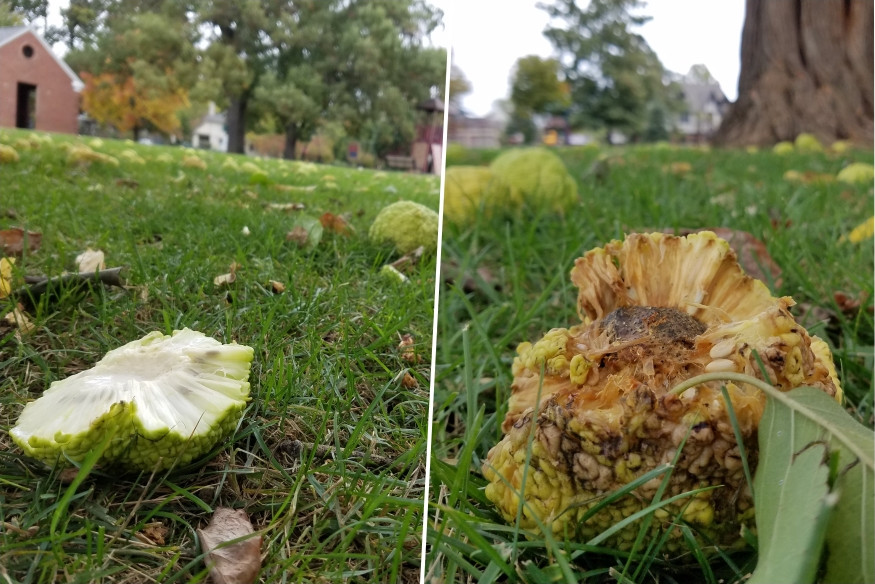
A Hazardous Autumn Harvest
As autumn progresses, falling Osage orange fruits can pose a serious safety hazard. It’s no wonder that Native Americans once weaponized these dense, hefty orbs to their advantage.
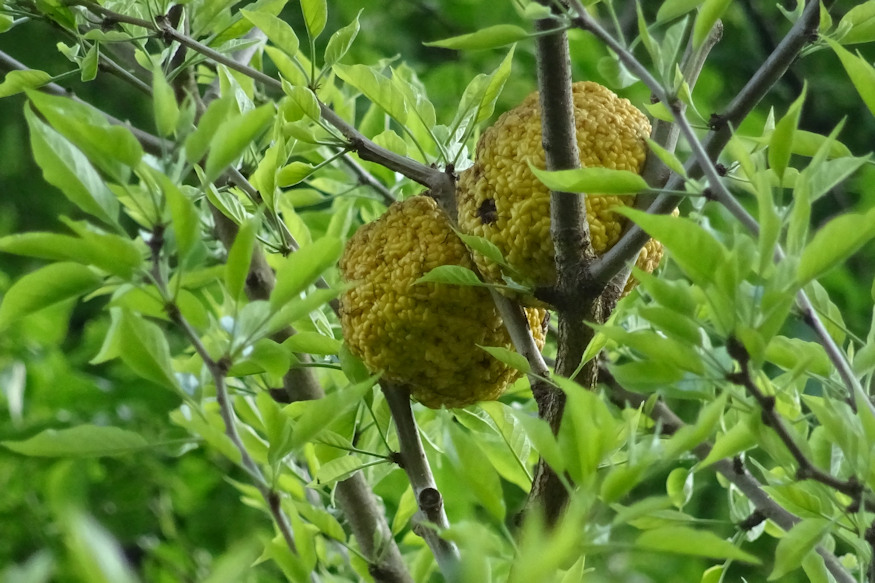
The Osage Orange’s Geographic Roots
Native to the regions of Texas, Arkansas and Oklahoma in North America, the Osage orange’s name pays homage to the Osage tribe that once inhabited Oklahoma. These resourceful Native Americans crafted bows and other tools from the tree’s wood.
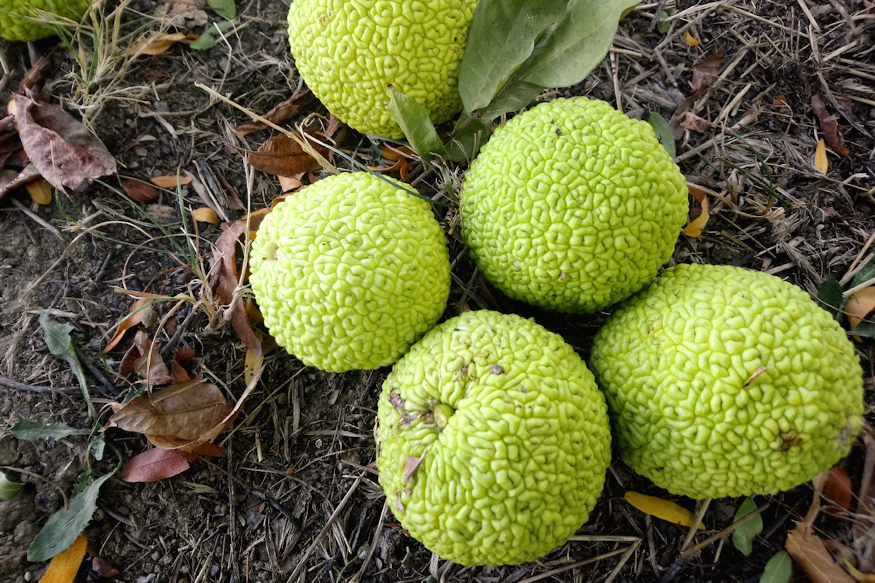
Durable and Versatile Wood
The Osage orange tree boasts a robust and flexible wood, tinted in a warm orange hue. Its durability and resistance to pests and weather make it a favored choice for crafting wooden wedges, poles, railway sleepers and fences. Additionally, it serves as a natural dye plant, providing a yellow dye for coloring wool and cotton, as utilized by Native American communities.

Growing the Osage Orange
Reaching heights of up to 18 meters, this thorn-covered tree prefers a mild, warm climate and thrives in sunny, well-lit locations. It exhibits remarkable drought tolerance and adapts to various soil types. The Osage orange’s ability to spread quickly has earned it a reputation as an invader of abandoned gardens and neglected areas. During the autumn season, its leaves transform into a striking shade of yellow.
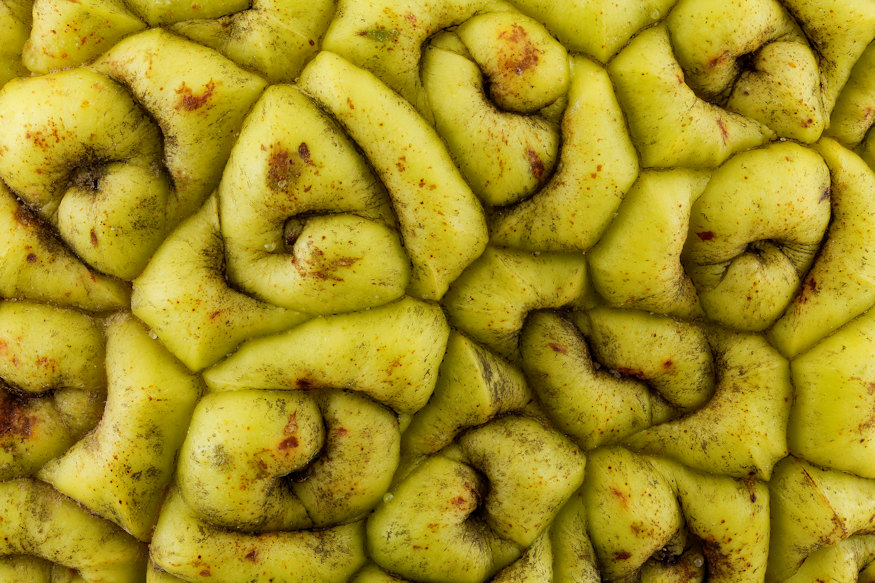
Practical Planting Strategies
Due to its thorny nature, the Osage orange often finds use as a boundary plant in garden plots. Its resilience to pruning makes it a practical choice for hedges and windbreak forest strips, offering protection to fields and landscapes.
Intriguing, practical and steeped in ecological history, the Osage orange tree is a remarkable addition to the world of gardening and arboreal wonders. While its fruit may remain an enigma in the context of modern ecosystems, its enduring legacy lives on in its versatile wood and distinctive presence in the natural world.



